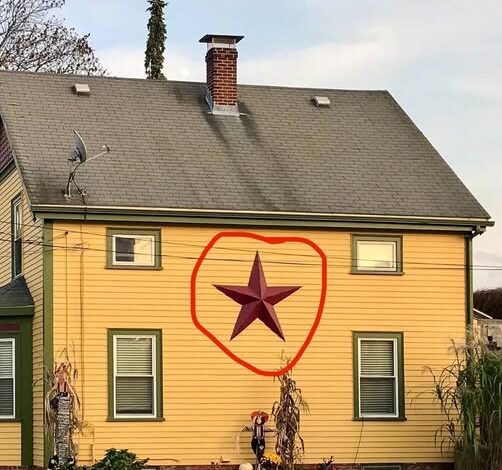
The True Meaning Behind Barn Stars!
Barn stars, those eye-catching symbols often seen above the doors of barns, are more than just rustic ornaments. At first glance, they look like simple decorations—sometimes painted directly onto the wood, other times crafted from metal and bolted into place. But these stars, along with similar designs like hex signs and quilt blocks, carry a much deeper meaning rooted in history, culture, and symbolism.
For centuries, farmers—particularly German-American communities—used these designs not just to beautify their barns but to give them identity, protection, and pride.
The tradition of barn stars began with the Pennsylvania Dutch, a group of German immigrants who settled in Pennsylvania in the 1600s and 1700s. These settlers carried with them rich traditions, blending practicality with art, faith, and folklore. For them, barns weren’t just places to store livestock and crops—they were the backbone of survival. A farm was a family’s livelihood, and protecting it from misfortune mattered just as much as tending the fields. Out of this mindset came the barn star.
At its core, the barn star symbolized good fortune and protection. Farmers believed that by painting or attaching a star to their barn, they could keep evil spirits at bay and shield their land, animals, and family from harm. Much like a talisman, the star was a silent guardian, meant to attract positive energy and repel bad luck. Many believed it could help ensure healthy crops, fertile animals, and a steady, prosperous life.
But barn stars weren’t just about superstition. They were also a way for farmers to show pride in their land and craftsmanship. A beautifully designed barn with a striking star announced to neighbors and travelers that this was a farm run with care and dignity. The barns themselves were often built with precision and artistry, and the addition of a star elevated them into something personal and meaningful. It was the farmer’s signature, a mark of ownership, and in many ways, an expression of self.
The designs and colors of barn stars were not chosen randomly. Just like hex signs—those intricate circular motifs painted with bold patterns and symbols—barn stars could carry specific meanings. Certain colors were believed to represent qualities like protection, luck, fertility, or harmony. A star in black, for instance, was thought to bring protection. Green suggested growth and fertility. Blue symbolized peace and calm, while red was tied to strength and vitality. Some families even developed their own unique patterns that carried spiritual or personal significance, turning their barns into living testaments to their beliefs.
Beyond individual meaning, barn stars could also represent family legacy. Sometimes, the design, placement, or size of the star would reflect the history of the farm or commemorate an important milestone. Just as families pass down heirlooms, the star on a barn could serve as a visual reminder of generations who had worked the same land. It was a connection between past and present, linking descendants to their ancestors’ labor and perseverance.
Over time, variations of the barn star emerged. Hex signs, with their circular patterns filled with geometric and natural imagery, became popular among Pennsylvania Dutch farmers as another layer of symbolic decoration. Some hex signs were said to invite love, fertility, or abundance, while others focused on keeping negativity away. Quilt blocks were another form of decoration, painted as squares resembling the patchwork of traditional quilts. These blocks symbolized creativity, unity, and family tradition, blending artistry with cultural meaning.
Although the original mystical and spiritual beliefs tied to barn stars have faded for many people, their visual appeal has never lost its charm. Today, you’ll find barn stars not only on rural farms but also on suburban homes, porches, and even as indoor wall art. They’ve become a hallmark of rustic Americana—decorations that carry a sense of heritage, simplicity, and nostalgia. People may hang them purely for their aesthetic, but knowingly or not, they’re still participating in a centuries-old tradition.
For some, the barn star remains a symbol of pride in rural roots and a connection to hardworking ancestors. For others, it’s a small way of keeping a piece of old-world folklore alive in modern times. And for many, it’s simply a reminder that beauty and meaning can be found in even the most practical corners of life.
So the next time you drive past a barn adorned with a star, or notice one hanging on a neighbor’s house, pause for a moment. That star is more than a decoration. It’s a story—a piece of history carried across oceans by immigrants, preserved through generations of farmers, and kept alive today as a nod to culture, craftsmanship, and belief. Whether you see it as a charm of good luck, a tribute to heritage, or just a timeless design, the barn star connects us to something larger: a reminder of the resilience, hope, and pride that built not just farms, but communities.




